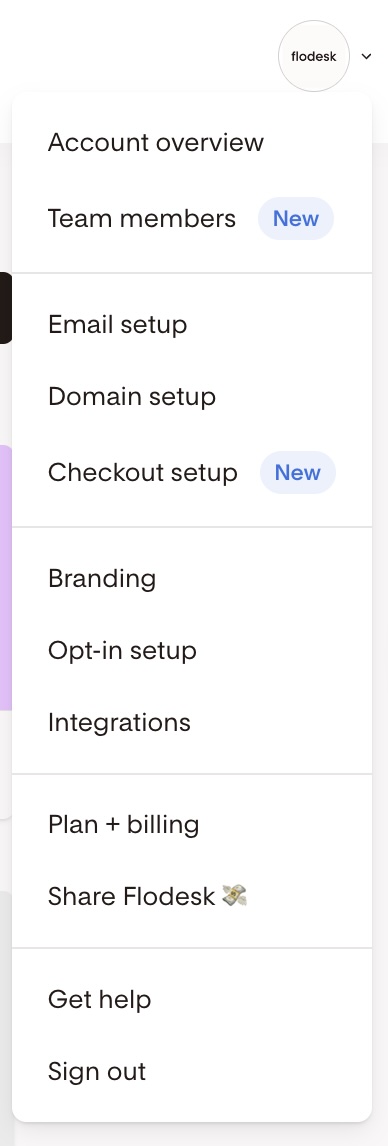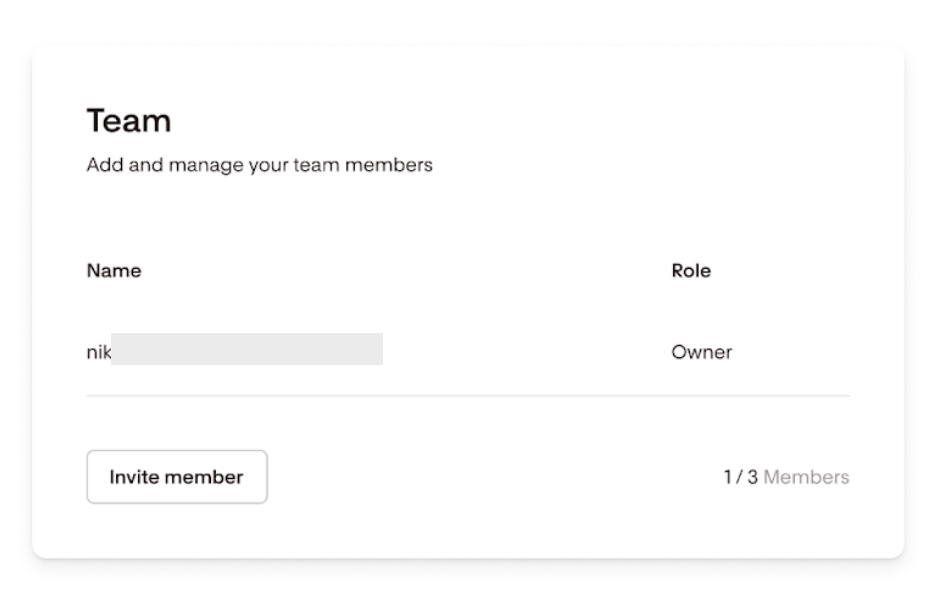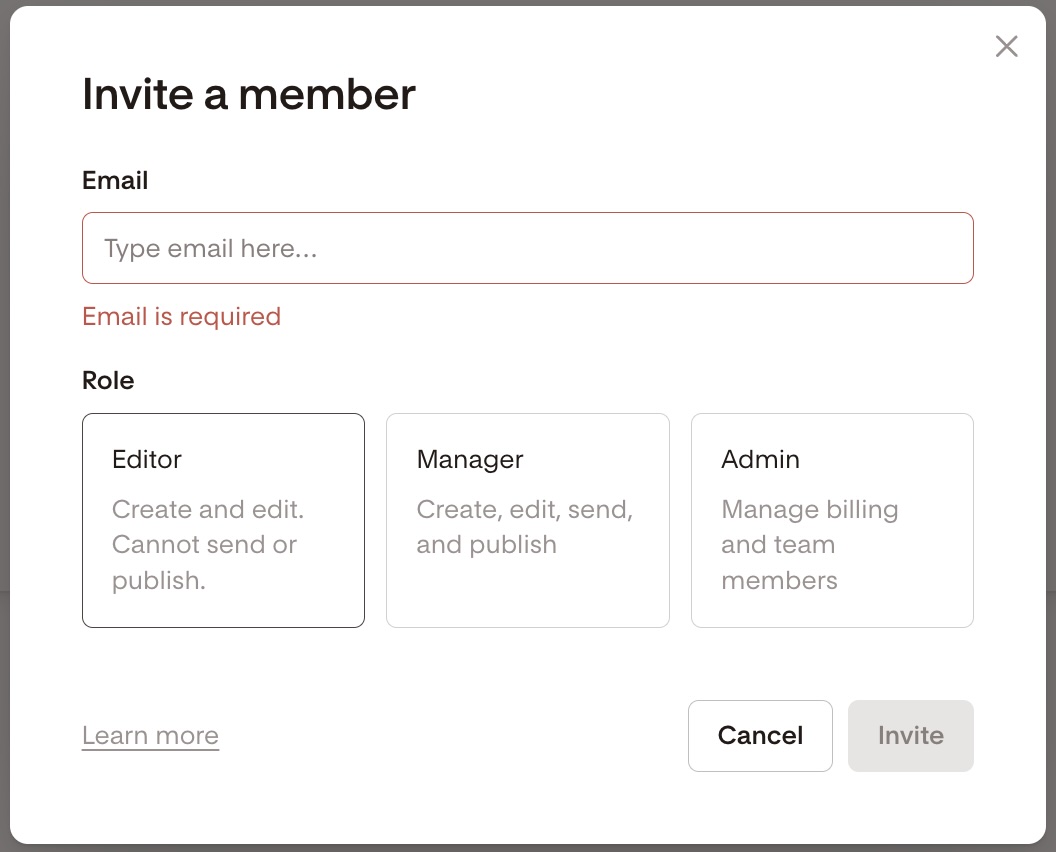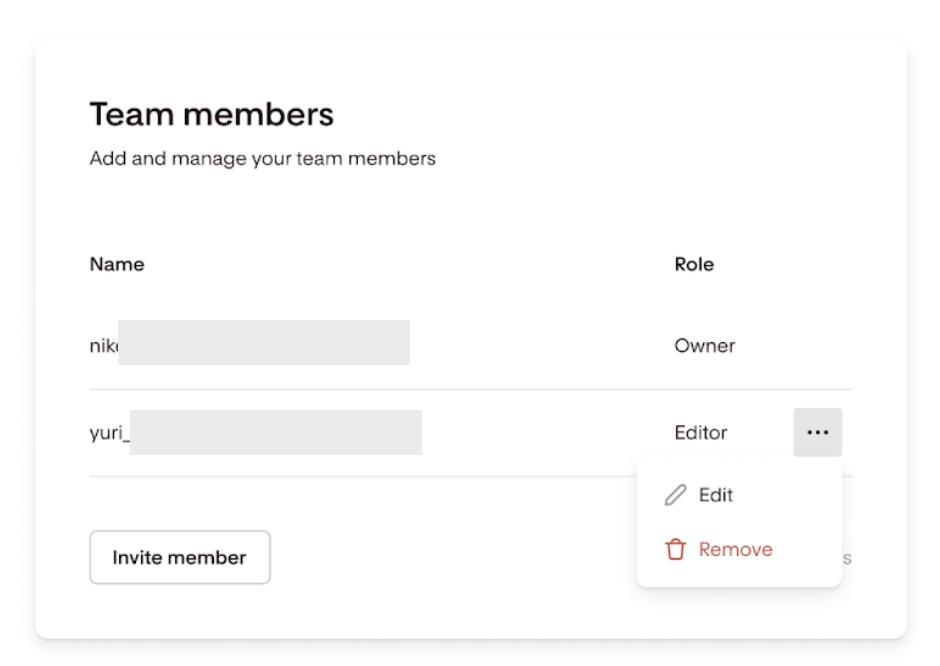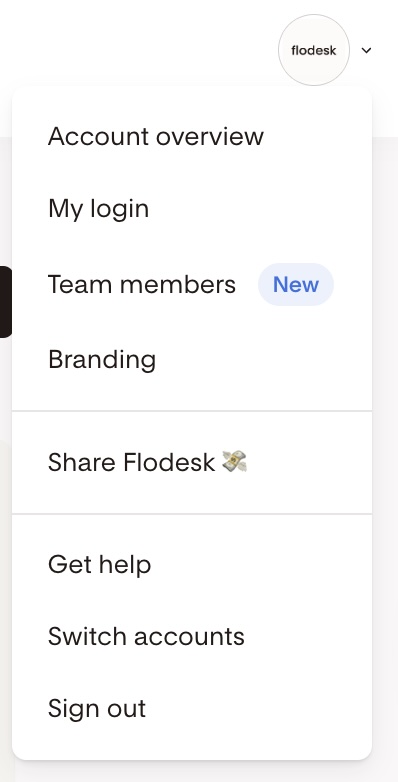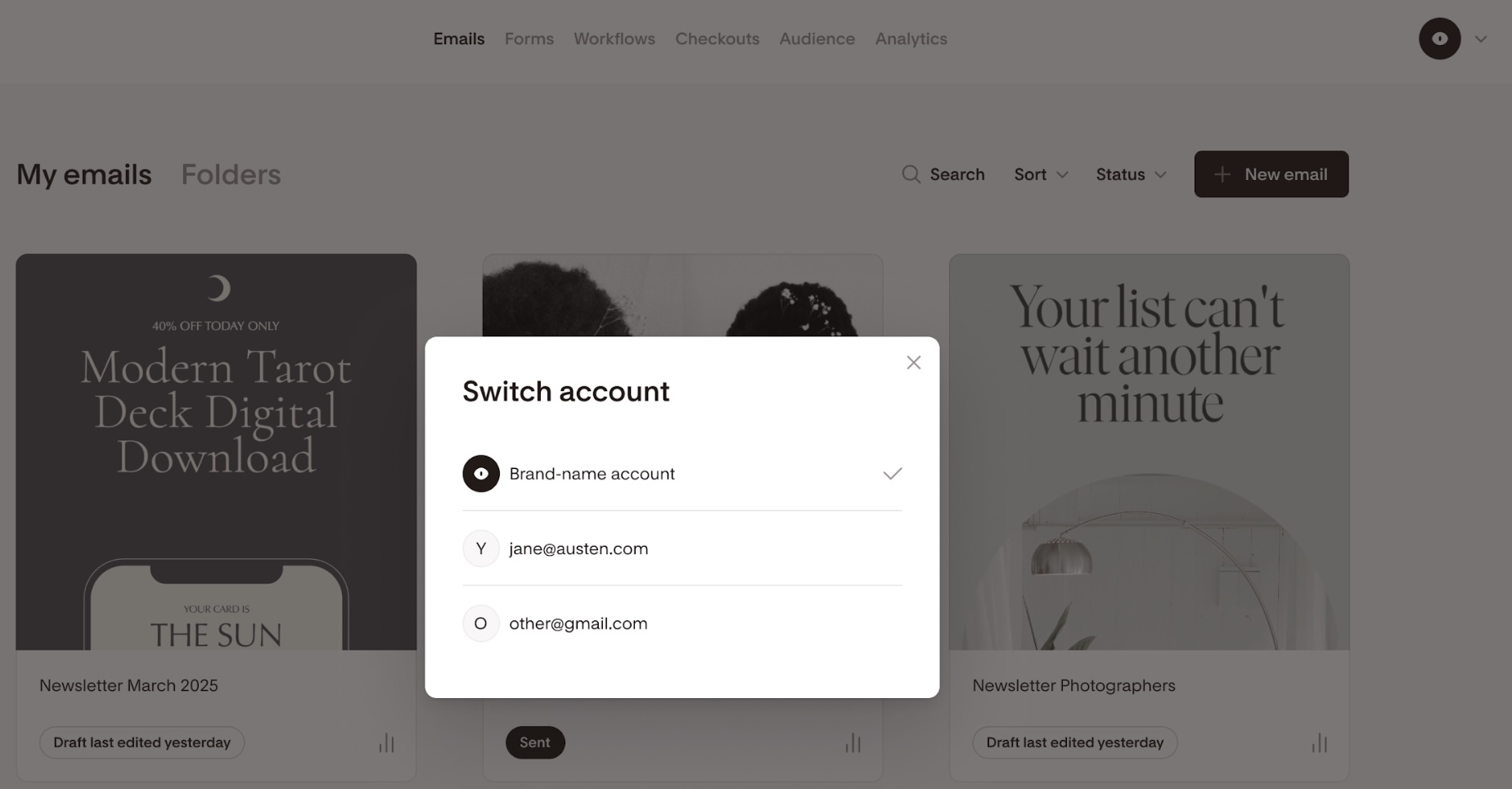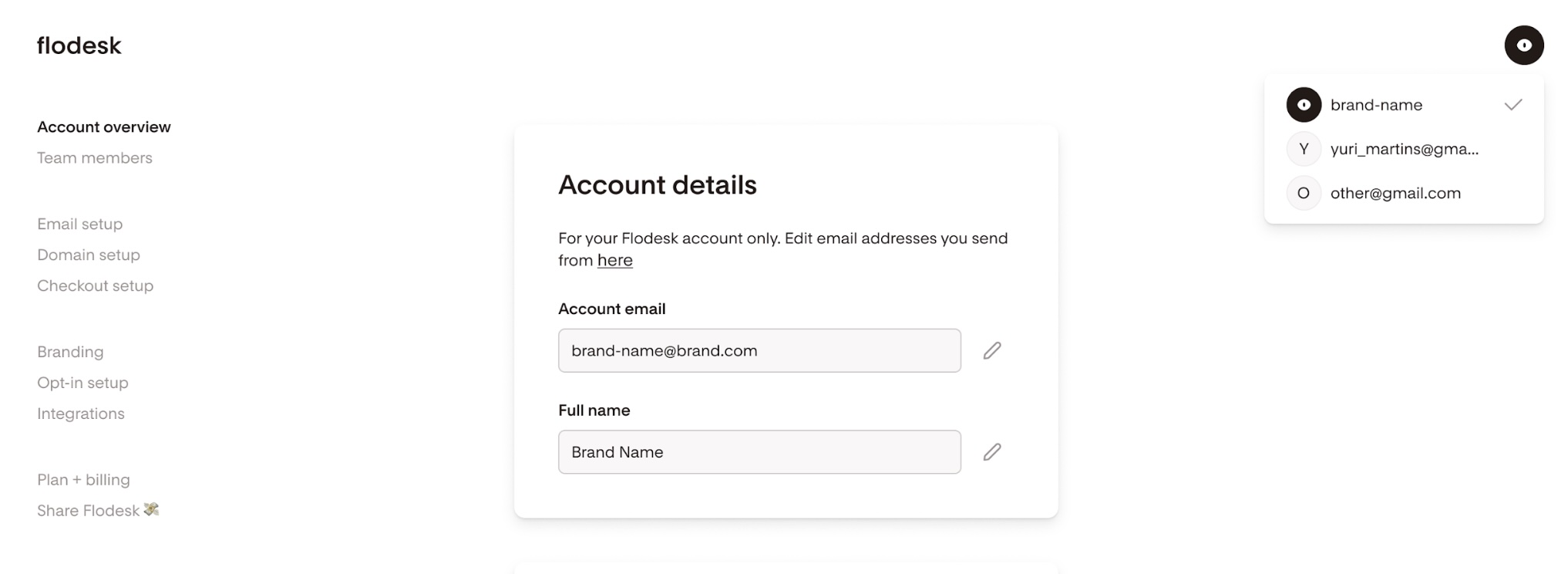Managing Team Seats: Add Team Members, Switch Accounts, and Understand Permissions
Overview
Flodesk’s Team Seats feature lets you securely collaborate with others in your Flodesk account by giving each team member their own login and specific access level.
Whether you’re running a business with teammates or working with clients, this guide walks you through:
Adding team members from your dashboard
Understanding member roles and what each can and can’t do
Switching between multiple accounts you have been invited to
Team Member Limits by Plan
Plan Type | Included Seats |
Free trial, Free plan, Lite plan | One [primary administrator (account owner) cannot be changed] |
Pro (Email Only) | Two [One of those being the primary administrator (account owner)] |
Everything (Email + Commerce/Everything bundle) | Three [One of those being the primary administrator (account owner)] |
Important notes
Trial users cannot invite collaborators. Only Flodesk members on a paid plan can invite additional team members to their account.
Do not use the Team seats feature if you simply want to add a second sender email to your Flodesk account. Each Flodesk account can have up to two sending addresses. Follow the steps from here to add an alternate email address to your account.
1. Inviting Team Members
To add a team member to your Flodesk account:
Go to Account Settings > Team members
Click “Invite member” on the Team section card.
Enter the email address of the person you want to invite.
Choose a role: Administrator, Manager, or Editor.
Click Invite, and a notification email will be sent to the person, inviting them to join your Flodesk account.
Note: Invites expire after 14 days. You can’t resend the invite. You need to delete the invite and re-invite them if needed.
If the invited user doesn’t already have a Flodesk account, one will be automatically created for them in a non-active state.
2. Member Roles and Permissions
Each authorized team member is assigned one of three roles. Here’s what each can and cannot do:
Administrator
Who this is for: The account creator or a trusted team member who manages everything.
Can do:
Manage users (invite/remove, change roles)
Access all billing and subscription info
Add integrations
Create, publish, edit, and delete content
Full control over account settings, including domains
Download CSV reports
Cannot do:
Transfer ownership (only one primary Administrator per account, and it’s non-transferable)
Manager
Who this is for: Someone who handles day-to-day operations but doesn’t need access to sensitive billing or account-wide settings.
Can do:
Edit, create, and publish campaigns and workflows
Add integrations (e.g., connect tools)
Moderate published content
View performance data
Download CSV reports
Pause and unpause workflows
Cannot do:
Access or edit billing details
Invite or remove users
Change user roles
Modify subdomains
Editor
Who this is for: A collaborator who creates and edits content but doesn’t publish it or access broader settings.
Can do:
Draft and edit email campaigns, workflows, and pages
Suggest changes to published workflows
Add emails and logic inside workflows
View but not publish content
Cannot do:
Publish or unpause workflows
Add/remove users or integrations
Access payment or billing information
Export or delete content
Change domains or other global settings
Example: If an 'Editor' wants to change a published workflow, they’ll need a 'Manager' or 'Admin' to pause it first. The 'Manager' or 'Admin' must also republish the changes once the 'Editor' has completed them.
Quick Role Comparison
Feature | Admin | Manager | Editor |
Invite/remove users | ✅ | ❌ | ❌ |
Access billing | ✅ | ❌ | ❌ |
Add integrations | ✅ | ✅ | ❌ |
Publish campaigns or workflows | ✅ | ✅ | ❌ |
Edit content | ✅ | ✅ | ✅ |
Export/delete content | ✅ | ✅ | ❌ |
3. Editing or Removing Member Roles/Permissions
If you wish to change the member permissions on your account or remove them completely, click the (...) menu and select Edit or Remove.
4. Switching Between Flodesk Accounts
Flodesk supports a multi-account structure. If you’re part of more than one Flodesk account (e.g., managing multiple brands or client accounts), you can switch between them easily.
Each user:
Owns at least one account
Can be authorized on up to 20 different accounts
To switch accounts:
Click the profile image in the upper-right corner and select Switch Accounts. The example below shows what this looks like for an 'Editor' member role.
Choose the account you want to access. You’ll only see accounts where you’ve been invited and approved.
Switching accounts lets you keep work separate across brands or clients—without needing multiple logins. Always make sure you’re working in the right Flodesk account:
If you click into the Account settings pages, you will be shown an indicator in the top right corner that helps identify which account you are making changes to.
Clicking on the icon will open an account switcher pattern.
FAQs
Q: Can I transfer the account owner role?
A: No. The primary Administrator is fixed and cannot be changed.
Q: What happens if an invited user already has a Flodesk account?
A: They’ll simply gain access to the new account without affecting their existing one.
Q: What if I’m invited but don’t have a Flodesk account yet?
A: An account will be automatically created for you when you accept the invite. You can activate it when you’re ready to begin using it.
Q: Can one person be part of multiple accounts?
A: Yes! A single user can be linked to up to 20 different Flodesk accounts.
Q: What happens to team members if I cancel or downgrade my Flodesk plan?
A: If you cancel or switch to a Flodesk plan that only supports fewer users, you need to manually remove any team seats that are above the permitted threshold.
Final Tips
Keep member roles assigned based on need—this avoids accidental changes to billing or live campaigns. Use the Manager role for trusted collaborators, and the Editor role for content creators.
Keeping your team permissions clear ensures smoother workflows, fewer errors, and better results for your business.
If you just want to add a second sender to your Flodesk account, go to Account settings > Email setup. and do not use the Team seats feature for this purpose.

